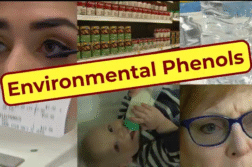ORLANDO, Fla. (Ivanhoe Newswire) — Adults on average get one or two colds per year, with children getting up to six, and they usually last four to five days. The symptoms are runny nose, dry cough, and sore throat. But with the common cold, there are also some common myths that come with it. For example, did you know that you can get a cold year-round, not just in the winter? Here are some other myths to debunk.
You’ve had the common cold — in fact, you’ve probably had it already this year. And you’ve probably heard that there’s just one cold virus, right?
“There are over 200 types of viruses,” said Tim Hendrix, MD, medical director with AdventHealth Centra Care Urgent Cares.
He has been seeing patients with cold symptoms for 30 years, and he’s heard many myths.
“It’s a common thing for me to see people come in during the day wanting an antibiotic to treat their cold symptoms because it seemed to work before. But it really just creates more problems with antibiotic resistance in our community because if we’re treating these viruses with antibiotics, the bacteria out there are gonna become more and more resistant,” explained Dr. Hendrix.
So, should you be using Vitamin C instead?
“The studies have not shown any benefit to taking Vitamin C and preventing colds or treating the symptoms,” stated Dr. Hendrix.
He recommends only going to the doctor if you get a high fever or if your cold symptoms are causing great discomfort. Otherwise use over-the-counter medicine, drink lots of fluids, and rest.
“An interesting study a few years ago showed that people that get less than five hours of sleep at night actually are three times more likely to get the common cold virus,” Dr. Hendrix told Ivanhoe.
So the best preventative is just taking care of yourself, and that’s no myth.
If you want to know what other respiratory illnesses could be in your community, Dr. Hendrix recommends looking at the CDC’s website for signs of an increase in COVID-19, RSV, and Influenza A. There are also new at-home FDA-authorized COVD-19 and Flu A and B combination tests that you can buy online that test for all three illnesses at once.
Contributors to this news report include: Marcy Wilder, Associate Producer; Chuck Bennethum, Videographer & Editor.
Source:
https://www.cdc.gov/respiratory-viruses/data/activity-levels.html
* For More Information, Go To https://centracare.adventhealth.com/urgent-care/central-florida
Free weekly e-mail on Prescription: Health from Ivanhoe. To sign up: http://www.ivanhoe.com/ftk



